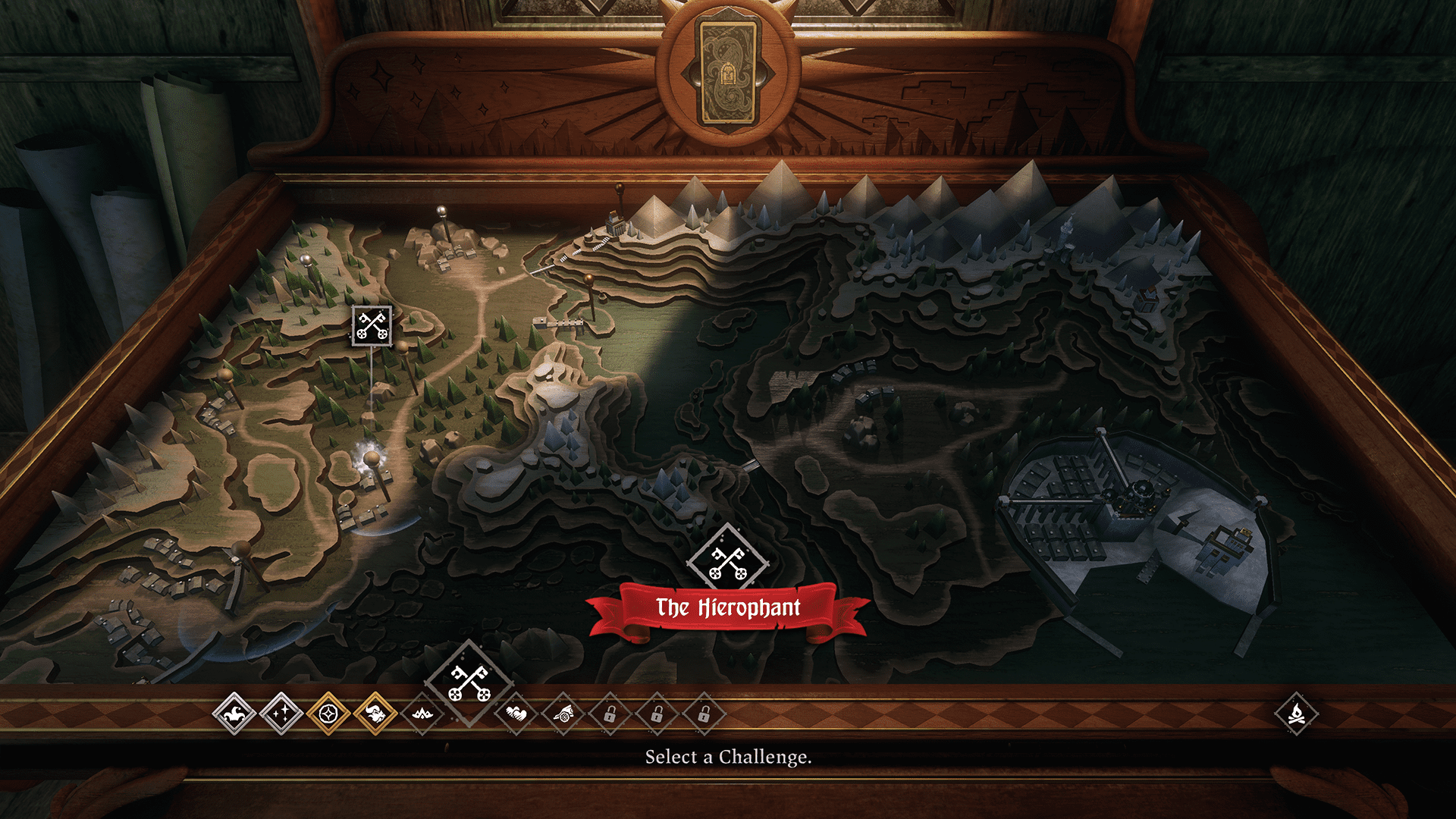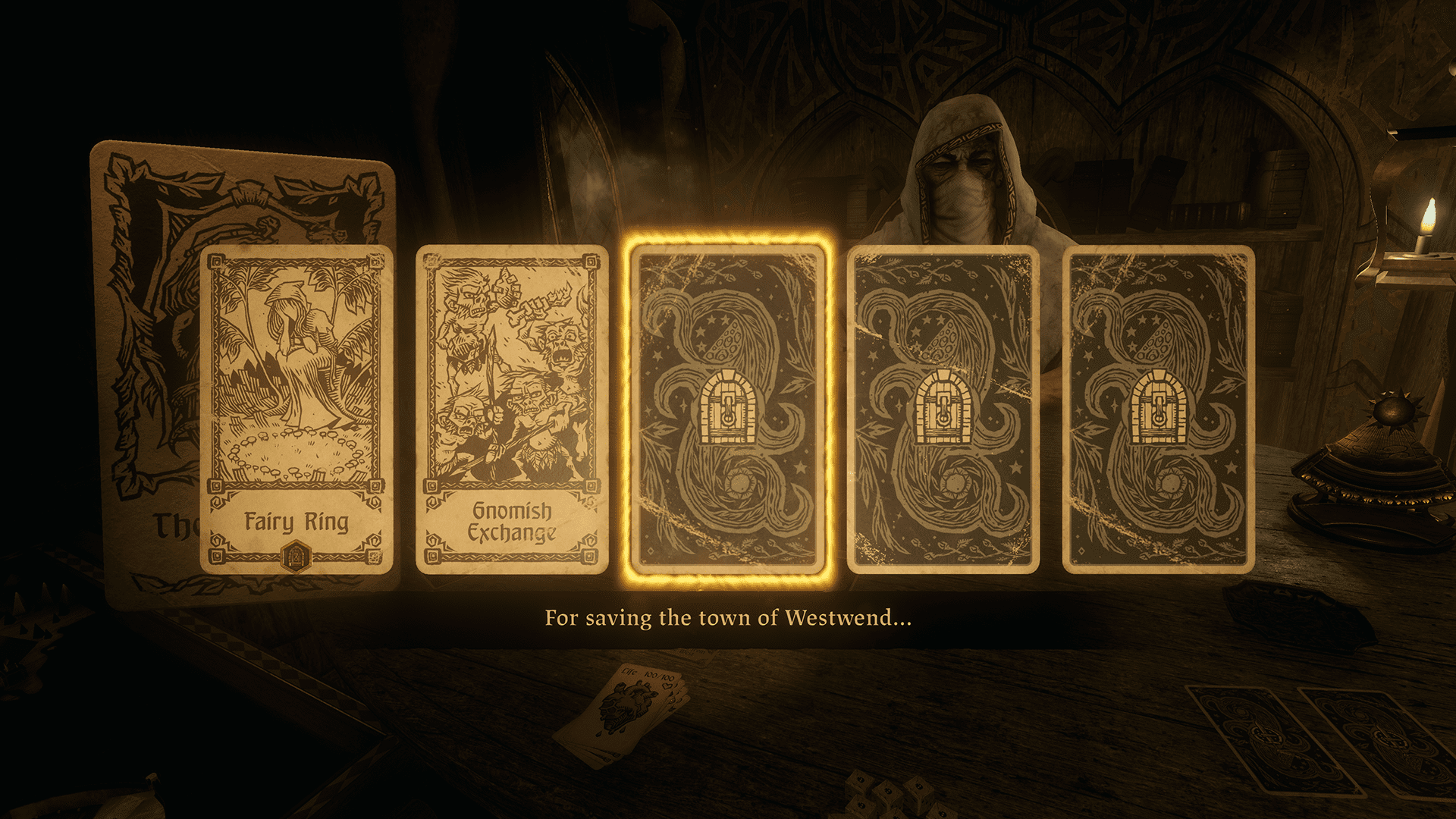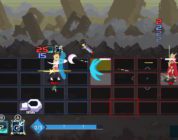The Dealer is back from the netherworld, ready to challenge anyone brave (or foolish) enough to sit down and play his game. Hand of Fate 2 brings many beloved elements from the first game, like The Dealer’s signature insults, with a few tweaks here and there to create a smoother, more intricate sequel. Half rougelike, half deck-building card game, Hand of Fate 2 keeps the same mechanics in place that make it so unique, but it’s not a game for everyone.
Hand of Fate 2 is a combination of board game mechanics and video game mechanics, utilizing dice, cards, sword fighting combat, and RPG-style dialogue that can influence immediate outcomes based on the player’s choice. The player has their own deck of cards, while The Dealer has his. Based on the outcome of certain challenges or specific cards you land on, what he gives could be anything: life-saving food supplies or a harsh lesson in keeping your gold within your sights, The Dealer can be as kind as he is brutal, even if it seems like all he does is toss insults around most of the time.
Instantly noticeable are the refined graphics and brilliant animations. For those new to Hand of Fate, like myself, the way the parlor-esque atmosphere is created with little details like fine grain in the wood table, moonlight reflecting off the curtains, and the intricate, wood carved panel behind The Dealer makes it easy to appreciate the artistry that went into creating the visuals. From the drawings on the cards to the challenge map, every visual is a treat—even The Dealer and his distorted face and arms.
For being new to the Hand of Fate series, picking up on the rules and mechanics was intuitive for the most part. But, there were a few things that were unexplained. For example, during the High Priestess challenge, players must get a certain number of fame points to “impress” her. There are severe consequences (losing health points) if they don’t, but there seems to be no clear rule as to how many cards are pulled from the deck. Does one card get pulled for every X-number of missing fame points, or is it a flat number that The Dealer draws from this hand? This was a brutal moment for me as I lost 60 health points in mere seconds, left with barely enough to swing at a single enemy once or twice before I died in the following combat challenge.
The combat feels weighted—more reliant on strategy rather than the floatiness that hack-n-slash combat often has. However, it’s much easier control-wise to use a controller than a keyboard. Not to far into the game players will counter some enemies who can throw a weighted rope with a large metal ball at each end to bind their character in place. Using A and D on a keyboard to break free from this could be cumbersome; for myself, my left fingers just didn’t have the speed to break free before another of the enemies attacked. I had to take my right hand off the mouse and use both index fingers. The keybindings can be changed, but that still doesn’t stack-up against the ease of using a controller.
The addition of companions to Hand of Fate 2 gives players an extra boost in battle. Malcalypse, for example, can cast a protective shield around the player. But, players need to be within a certain range for their companion to cast it. These companions also have their own stories and challenges to go along with them, so they’re not two-dimensional characters.
The non-combat mechanics, picking cards, dialogue, and rolling dice, seemed to be unbalanced. Perhaps other players had a different experience, but I found the dice rolls were too often in my favor; every time I rolled the dice I hit the target number or higher on the first roll. On the opposite end of the spectrum, nearly every card I chose from the four-card line-up was a failure. Of course these moments seemed much more unfair, but the unfairness needed to be spread a little more evenly across all the mechanics.
After each challenge, the cards reset, allowing players to re-build their deck specific to the new challenge ahead. It’s a straightforward mechanic with a clear purpose—even if it’s somewhat frustrating to gain new items in a previous challenge and not have them for your immediate use in the next. It felt like I was taking one step forward only to move two steps back. However, each challenge rewards players with better weapons and the like, so they can build better decks for harder challenges later in the game—players just need to power through the later-game repetitiveness.
There’s a peculiar quirk in the way the dealer’s dialogue talks over the in-game text right as it appears; the dialogue is completely different from the text. This split my attention and make it hard to focus on one or the other. I found myself having to make a conscious decision to listen to the dealer first and then read the text on the screen. I suspect that some other players may have had the same issue as most of us are used to either reading text right as it appears or having the dialogue match the text in a subtitle format or something similar.
Ultimately, for those who prefer story to collecting better weapons, there isn’t a big enough incentive to keep progressing through the challenges. There’s not much that connects each challenge together, other than collecting more companions and unlocking more cards with tokens as you go. The stories behind the challenges in themselves don’t offer much depth, and as a result doesn’t make the player’s journey feel meaningful until they have long past the point where the game starts to feel repetitive. The ending is good, it just takes too long to get there.
For more information on Hand of Fate 2, check out the official website. A copy of the game was provided by the developer.






